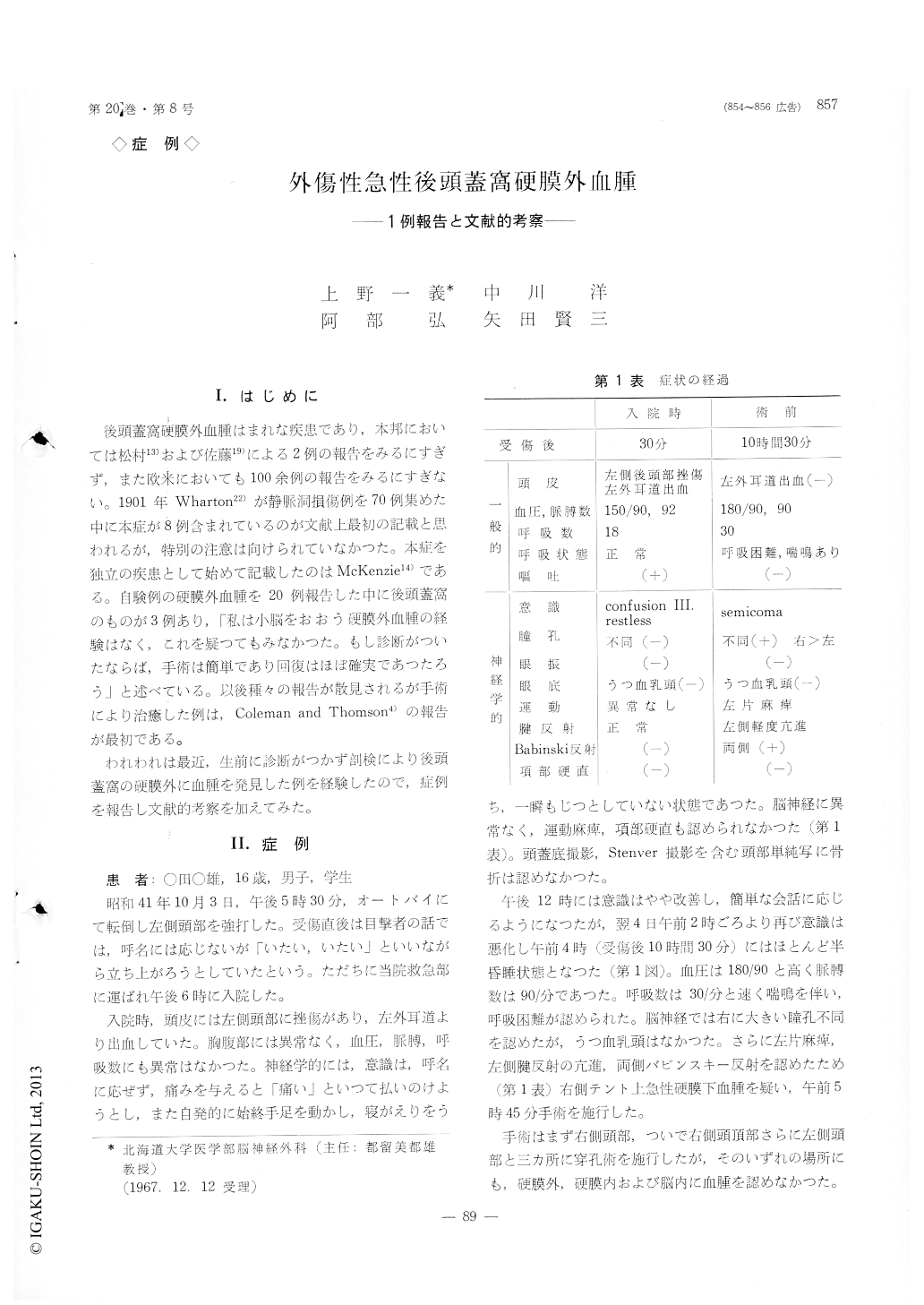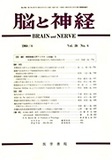Japanese
English
- 有料閲覧
- Abstract 文献概要
- 1ページ目 Look Inside
I.はじめに
後頭蓋窩硬膜外血腫はまれな疾患であり,本邦においては松村13)および佐藤19)による2例の報告をみるにすぎず,また欧米においても100余例の報告をみるにすぎない。1901年Wharton22)が静脈洞損傷例を70例集めた中に本症が8例含まれているのが文献上最初の記載と思われるが,特別の注意は向けられていなかつた。本症を独立の疾患として始めて記載したのはMcKenzie14)である。自験例の硬膜外血腫を20例報告した中に後頭蓋窩のものが3例あり,「私は小脳をおおう硬膜外血腫の経験はなく,これを疑つてもみなかつた。もし診断がついたならば,手術は簡単であり回復はほぼ確実であつたろう」と述べている。以後種々の報告が散見されるが手術により治癒した例は,Coleman and Thomson4)の報告が最初である。
われわれは最近,生前に診断がつかず剖検により後頭蓋窩の硬膜外に血腫を発見した例を経験したので,症例を報告し文献的考察を加えてみた。
Extradural hematoma in the posterior fossa in a fairly rare occurrence. Among the approximately 100 cases reported in the world literature, only 17 cases were acute cases (cases which had no lucid interval or had lucid interval shorter than 24 hours).
The case reported here was a male aged 16. He fell from a motor bicycle and hit his left temporalarea. When he was admitted to the hospital a halt hour later, he was restless but reacted to painful stimuli. No positive neurological signs were found. Skull films on admission showed no evidence of frac-ture. The level of consciousness gradually improved thereafter and he became able to carry simple con-versation 6 hours later. Approximately 10 hours after the trauma, his consciousness started to de-teriolate, blood pressure rose to 180/90, pulse rate 90, and the respiration became irregular and counted 30 per minute. Right pupil became larger than left and a mild left sided hemiparesis was first noted at that time. Because of these signs exploratory burr holes were made in the bilateral temporal and par-ietal regions but failed to find hematomas. The pa-tient seized respiration about half an hour after the operation and expired.
On postmortem examination, an extradural he-matoma weighing 60 grams was found over the left cerebellar hemisphere. There was a fracture line in the left occipital bone which was not visualized on the X-ray film.
By reviewing the literature, it can be said there are no reliable clinical signs by which one can make definitive diagnosis of the extradural hematoma of the posterior fossa. However there are several points which make one suspicious of the diagnosis. They are as follows: (1) Elevation of blood pressure with increased pulse rate. (2) Sudden deterioration of the level of consciousness accompanied by respiratory change. (3) Suppressed deep tendon reflex. (4) Cerebellar signs if any. (5) Fracture lines in the posterior fossa.

Copyright © 1968, Igaku-Shoin Ltd. All rights reserved.


